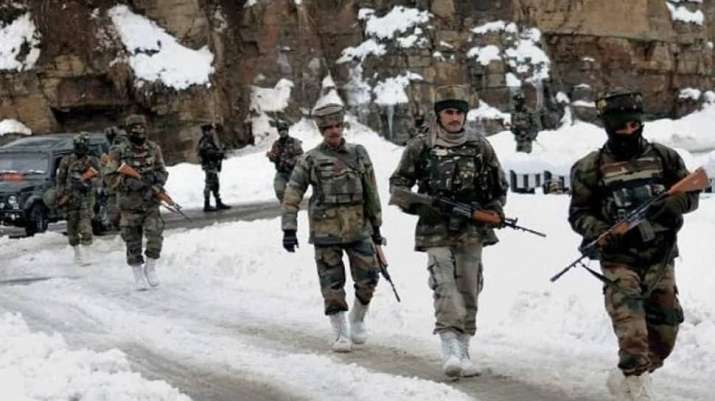
Global media sees Galwan as China’s attempt to gain upper hand in Asia
Global media reports claimed that the clashes between Indian and Chinese troops at the Galwan Valley in Ladakh, and the previous disputes along the border was a sign of a “more forceful” China trying to establish and expand its territorial claims across Asia.

Global media reports claimed that the clashes between Indian and Chinese troops at the Galwan Valley in Ladakh and the previous disputes along the border were a sign of a ‘more forceful’ China trying to establish and expand its territorial claims across Asia.
Amid the COVID-19 pandemic that forced global activity to a standstill, China, over the past weeks, had confronted Malaysian and Vietnamese vessels in the South China Sea. The country sailed an aircraft carrier twice through the Taiwan Strait, indicating that it was trying to stake more claim and push its way into acquiring more power across Asia.
“The confrontations with India fit ‘a broader pattern of Chinese assertiveness’,” The New York Times quoted Tanvi Madan, director of the India Project at the Brookings Institution in Washington as saying.
She also pointed out that this was the fourth such dispute since Xi Jinping rose to power at the end of 2012.
Similarly, The Washington Post said these clashes come at a time when China is “flexing its muscles across the region” amid a global pandemic.
Newspaper serving as Beijing’s mouthpiece confirms casualties for China in Galwan clash
Five Chinese soldiers were killed and 11 others were injured in the clashes with India at the Galwan Valley in Ladakh, said a senior reporter at The Global Times, which was a mouthpiece for the Beijing administration.
Reports say 5 PLA soldiers were killed and 11 were injured at LAC China-India border yesterday.
— Wang Wenwen (@WenwenWang1127) June 16, 2020
The deaths on both sides happen to be the first set of casualties reported over the past four decades in the brewing conflict along the Line of Control.
The Beijing newspaper later put out a tweet saying they had not reported on how many casualties China had suffered in any of their official accounts.
However, Hu Xijin, editor-in-chief of The Global Times, later said on Twitter, “Chinese sides also suffered casualties in the Galwan Valley physical clash. I want to tell the Indian side, don’t be arrogant and misread China’s restraint as being weak.”
Based on what I know, Chinese side also suffered casualties in the Galwan Valley physical clash. I want to tell the Indian side, don’t be arrogant and misread China’s restraint as being weak. China doesn’t want to have a clash with India, but we don’t fear it.
— Hu Xijin 胡锡进 (@HuXijin_GT) June 16, 2020
India, on the other hand, had lost three people — an Army Colonel and two other soldiers — in the face-off with the Chinese troops, according to the official statement.
However, according to news agency ANI, government sources had said at least 20 Indian soldiers were killed in the “violent face-off” with China, and that the casualty numbers could rise.
ANI also said sources had confirmed that China suffered 43 casualties, including those killed and seriously injured in the face-off.
A senior Indian Army officer also said more than 20 Indian soldiers had been captured and many could still be in Chinese custody.
Sources in the army said no shooting took place and that only stones and batons were used.
China’s Foreign Ministry accused India of crossing the border first. Chinese Foreign Ministry spokesman Zhao Lijian also said Indian troops had crossed the Line of Actual Control twice.
He also accused India of “provoking and attacking Chinese personnel, which led to serious physical conflicts between the two sides”.
He further warned India of “unilateral action”.
Talks at the Major-General level talks are currently underway at the location of the standoff to resolve the issue.
This incident comes after weeks of escalating tensions between India and China, which were triggered after an arm-to-arm combat between Indian and Chinese troops. This was followed by both nations bringing in more troops and recording increased activity along the area, including allegedly enhancing temporary defence infrastructure and weaponry, and upgrading a military airbase around 180 km from the Pangong Tso area.
A series of talks by both sides followed, after which the two nations resolved the dispute and began to disengage slowly. Army sources said the conflict in the Galwan Valley took place during the disengagement process.
The whole ordeal began when China opposed India’s plan to lay a key road in the Finger area around the Pangong Tso Lake and the construction of another road connecting the Darbuk-Shayok-Daulat Beg Oldie road in Galwan Valley.
The road in the Finger area in Pangong Tso is considered crucial for India to carry out patrol.
India stated firmly that it would not stall any border infrastructure projects in eastern Ladakh in view of China’s protests.


